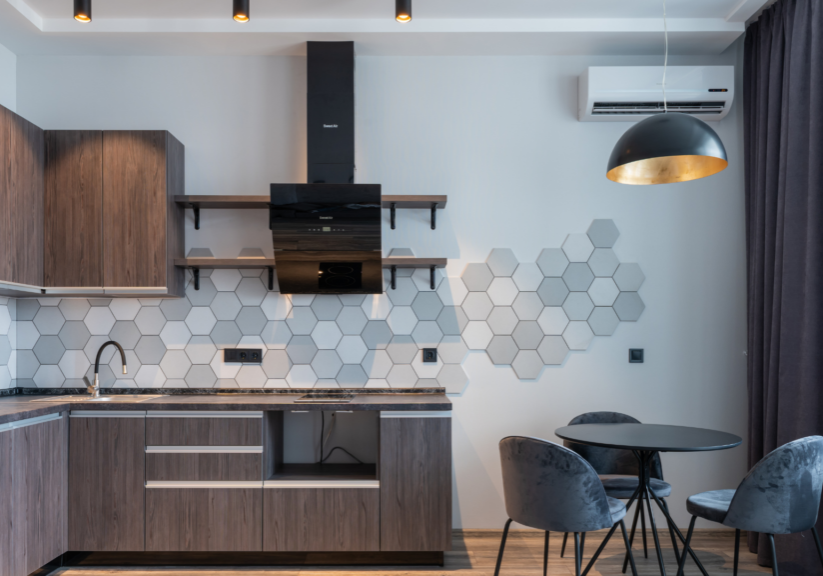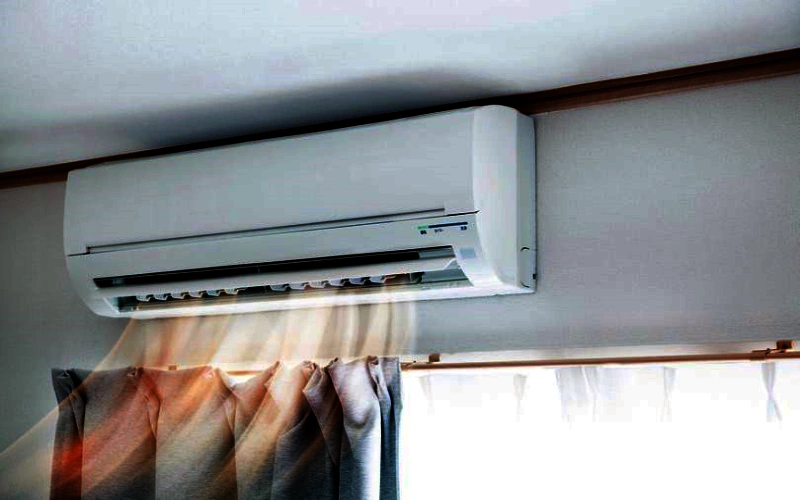How Many Ductless Units Do I Need: A Step-by-Step Calculation

To determine the correct number of ductless units for your home, the size of your space plays a crucial role. Measurement linked to a term called BTU (British Thermal Units), which shows the heating or cooling ability of a unit, helps to decide how many units you’ll require. A rule of thumb is that you would need around 6,000 BTUs for each block of 150–300 square feet. But remember, this number can change depending on factors such as ceiling height and home insulation.
The number of ductless units needed for a home depends on factors such as the size of each living area, the layout of the home, and individual comfort preferences. An HVAC professional can evaluate these factors to determine the ideal number of units to provide efficient heating and cooling throughout the entire home.
Estimating the Interior Space for Ductless Units
When determining the right number of ductless units, it’s crucial to accurately estimate the interior space. This involves more than just measuring square footage. Let’s break down this process into steps so that you can calculate the exact cooling and heating needs of your home.
Start by measuring the length and width of each room that you plan to heat or cool with ductless units. Multiply these measurements to find the square footage of each room. For example, if a room is 20 feet long and 15 feet wide, the square footage would be 300 square feet.
Once you have the square footage for each room, add up the total to determine the overall square footage that needs to be heated or cooled. This will give you a good idea of the total capacity you’ll need from your ductless units to maintain a comfortable indoor environment throughout your home.
Consider an open floor plan or areas with high ceilings that connect to other rooms. These spaces can significantly impact the distribution of air and temperature control. For instance, if the living room and kitchen are connected with no wall in between, they may require a larger unit to effectively cater to both areas.
High ceilings also require special consideration, as they can lead to elevated temperatures in a room. This means you might need more than one unit to effectively distribute air in rooms with high ceilings, ensuring consistent airflow and temperature regulation.
Estimating the interior space for ductless units isn’t just about square footage; it’s about understanding how air flows through your home and how different designs and setups can impact temperature control. By carefully considering these factors, you can ensure that your ductless units effectively meet your home’s heating and cooling needs.
Understanding the spatial dynamics of your home lays a solid foundation for determining the right number of ductless units. Now, let’s examine how various environmental factors within your home influence the number of units needed for optimal heating and cooling.
Home Conditions Influence the Units Needed
When determining the right number of ductless units for your home, insulation quality plays a crucial role. Well-insulated homes tend to retain temperature more efficiently, requiring fewer units to maintain a comfortable environment. Conversely, poorly insulated homes would likely require more units to compensate for heat loss or gain, ultimately resulting in increased energy costs.
Climate Considerations
Climate considerations also play a significant role in deciding the number of ductless units. Colder climates may necessitate additional heating units to keep your home warm, while warmer climates may require extra cooling units to combat higher temperatures. Understanding your local climate and its seasonal fluctuations empowers you to make informed decisions about the number and type of ductless units needed to keep your home comfortable year-round.
Window Placement and Sun Exposure
Another crucial factor to take into account is window placement and sun exposure. Rooms with large windows or high sun exposure often experience greater heat gain, particularly during the hot summer months. Consequently, these areas might require additional cooling units to offset the heat and maintain a pleasant indoor temperature. Conversely, rooms that receive less natural light and have limited sun exposure may need fewer cooling units.
Taking these factors into consideration can help you determine the optimal number of ductless units needed to ensure consistent comfort in every area of your home. It’s essential to perform a thorough assessment of these variables to make informed decisions about your home’s heating and cooling needs.
Understanding how these home conditions affect the number of ductless units needed is vital for creating an efficient and effective heating and cooling system tailored to your specific requirements.
The Role of Unit Count in Installation
The number of ductless units isn’t just a random consideration—it’s a critical factor that directly affects the installation and overall efficiency of the system. Each indoor unit needs a dedicated outdoor condenser and connecting refrigerant lines. So, when deciding how many units to install, you’re also determining how many outdoor condensers will be required.
It’s not just about the quantity, but where each unit will be placed. Proper planning for indoor and outdoor unit placement should ensure optimal performance and balance throughout the home. For instance, placing all units on one side of the house might overload one condensing unit while underutilizing another, leading to uneven heating or cooling.
Imagine your home as a small ecosystem, and each ductless unit as a key player. When you have too few or too many indoor units for the space, it’s like having too few or too many pieces on a chessboard—there’s no balance. On the other hand, if you distribute them evenly across your home, they work together to create an ambient and comfortable environment.
To achieve this harmonic balance, it’s essential to strategically plan the placement of both indoor units and outdoor condensers. This requires a careful assessment of your home’s layout, its thermal characteristics, and your unique comfort requirements.
Diamond Comfort can offer professional guidance on the optimal placement of units based on your home’s layout and specific needs. By consulting with HVAC professionals, you can ensure that every unit is located in an ideal spot to deliver efficient heating or cooling without overburdening any individual unit.
Understanding the importance of the strategic placement of units can significantly impact the overall comfort and efficiency of your home’s heating and cooling. It’s important to carefully consider not only the number of units required but also their optimal placement for balanced and effective operation. Learn more about why ductless mini splits are more efficient than central air!

Making Ductless Units Work for You
Ductless units, with their ability to create different climate zones within your home, offer an unparalleled level of flexibility and customization. This means that if you have specific temperature needs in different areas of your home or if certain rooms are left unoccupied at various times, ductless units can be tailored to meet those exact needs. By allowing precise control over the temperature in each zone, these systems optimize comfort and energy efficiency.
Customized Climate Control
Let’s say, for example, that the kitchen heats up when you’re cooking, while your bedroom stays cool most of the day. A ductless unit would allow you to set a lower temperature in the bedroom and keep the kitchen comfortably cool during meal preparation. This is far more efficient than controlling the temperature of the entire house to match just one area.
Personalized Comfort Settings
Moreover, ductless units are perfect for homes with varying temperature requirements across different rooms. For instance, a baby’s room might require a slightly warmer temperature compared to the living room or kitchen. With a ductless unit, you can adjust each zone to meet these specific needs without affecting other areas of your home.
This zoning feature enables you to personalize your home’s comfort settings according to the unique preferences of each household member, ensuring that everyone enjoys their ideal climate.
If you and your family have differing temperature preferences in distinct spaces, consider utilizing ductless units to create personalized microclimates throughout your home. This will allow every member to enjoy optimal comfort without compromising energy efficiency.
With this level of adaptability, it’s clear that ductless units offer not just a way to regulate indoor temperatures but a means to elevate comfort and efficiency across your entire living space.
Advantages of Opting for Ductless Units
Ductless units are an excellent choice for many homeowners due to their numerous advantages. One of their most significant benefits is the energy efficiency they offer. Unlike traditional HVAC systems with ductwork that tends to cause energy loss, ductless units operate without ducts, reducing the energy loss and resulting in significant cost savings. This means your energy bills will likely decrease, leaving more money in your pocket each month.
Furthermore, the installation process for ductless units is also much simpler and less invasive compared to traditional HVAC systems. The time required for installation is often shorter as well. Traditional ductwork can be a hassle to install, requiring extensive construction work and a longer timeframe. With ductless units, you can enjoy the comfort of your home sooner without enduring extensive and disruptive installation processes.
Moreover, air quality is significantly enhanced with the use of ductless units. Many ductless systems come equipped with multi-stage filtration, effectively capturing dust, allergens, and other pollutants, thereby providing improved indoor air quality for you and your family. This means you can breathe easier knowing that the air inside your home is cleaner and healthier.
So, not only do ductless units provide energy savings and easy installation, but they also contribute to creating a healthier living environment overall.
Optimize Your Indoor Comfort Calculating the Perfect Number of Ductless Units
Selecting the optimal number of ductless units for your property is vital to achieving maximum comfort and efficiency. By following Diamond Comfort’s step-by-step calculation guide in this blog post, you can make informed decisions tailored specifically to your heating and cooling requirements.If you’re considering upgrading to a ductless unit or need additional information about their benefits, feel free to contact us to speak with our expert team. They can provide further insights tailored to your specific needs.
Have Any Questions?
Get in contact with us today! We are always happy to help, and you can count on our expertise.

